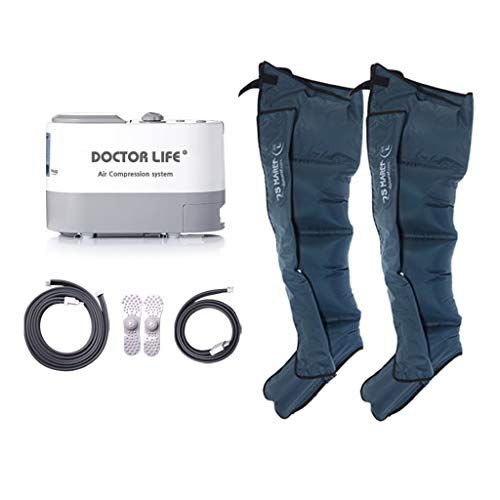How often do you think about your soleus muscle when you run? Probably never—unless you’re experiencing soleus pain—and that’s to your own detriment, says David Siik, senior manager of running and creator of Precision Running at Equinox. “This is a really undervalued muscle in the body, and one that’s critical for running,” he says. “I call it the sleeper muscle, because it works all the time but gets no credit.”
What is the soleus?
The soleus is a deep, pancake-like muscle—one of your three calf muscles—that extends from the Achilles tendon on the heel up to behind your knee. “The soleus is responsible for plantar flexion, which is when your toes point downward,” explains Tom Holland, an exercise physiologist, sports nutritionist, and coach. “That’s the push-off when you’re walking or running.”
Obviously, that push-off is crucial to the movement of running. And while the fast-twitch fibers of the gastrocnemius—or outer calf—are responsible for your Why Its Important to Avoid Running Through Injury, those lower, deeper muscles, which are full of slow-twitch fibers, are your distance muscles. “The soleus is heavily relied upon for enduring mile after mile, which is why long-distance runners are usually the first ones to experience soreness and overuse pain in their soleus,” Siik says.
Why am I experiencing soleus muscle pain?
The soleus is often called a “second heart” because of its ability to pump blood into the lower leg—and that means when its tight or lacks strength, it actually inhibits the flow of blood to your foot and ankle. In some cases, your calf area may literally lock up, making you unable to flex your foot and leaving you hobbling home. (Or, worse, to the finish line.)
“It’s the culmination of micro-tears over time and weakness,” Holland says. “Your body is not going to be able to push itself the way you need it to, and that’s where you really learn the role of the muscle.”
How does the soleus impact my run?
While true soleus injuries are rare, overuse—a dull, recurring, annoying pain—is very common in runners, Holland says. “One of the big things that people forget about the calf is the fact that it’s absorbing shock,” Siik says. “Every time you step down at the end of your gait, your body has to brake. The muscles that are going to allow you to brake are your gastrocnemius and your soleus, in that order. It’s the last muscle to absorb the shock.” Most people overwork their soleus muscles by running more on the balls of their feet—it’s actually a protective measure to keep that shock from going right up into your knees.
Some people naturally run on their forefoot (and there’s nothing wrong with that—it’s Running in the Cold as a rearfoot stride), but doing it too much can put you at risk for soleus strain. If tight calves are a more recent development, Instead of regular.
“A too-soft shoe is going to provoke you into running on your toes, which will automatically engage your soleus—and everything around your lower leg—more because it’s going to stop you from crashing on to your heel,” he explains. And the more overworked that muscle is, the more likely it is to seize up towards the end of a long run.
Self-massage before and after your long runs can help prime the muscle for running and increase blood flow to prevent soreness.
How do I strengthen my soleus?
Fortunately, the soleus an easy muscle to strengthen if you give it some TLC. The most common strengthening exercise is a wall sit variation, Siik says.
Hyperice Hypervolt Bluetooth: Begin with your back against a wall and lower down into a seated position with your feet flat on the floor. Your knees should be at a 90-degree angle and your thighs parallel to the floor. Place a weight evenly across your thighs or quadriceps muscles. Engage core, and keep back flat to wall as you roll up onto the balls of your feet to your end range of motion. Pause for a moment. Slowly return to the starting position.
Do a set with your toes pointed straight out, then with your toes pointed inward, and lastly, your toes pointed outward. You may also perform this exercise one leg at a time to avoid compensation. Do several sets of 8 to 10 reps. Start with light weight and gradually increase over time as your body permits.
You need to add weight, though, Holland says. “When we run, it’s a single-leg stance,” he explains, “and the force is two, three, four times our body weight. So bodyweight exercises alone aren’t going to help you here.”
DAA Industry Opt Out calf raises, try single-leg calf raises with a dumbbell in one hand, single-leg deadlifts with dumbbells, or balancing on an unstable surface. “That’s going to work those deeper, slow-twitch muscle fibers,” he says.
We earn a commission for products purchased through some links in this article treadmill versus outdoor running for some of your runs. “On a treadmill, there’s no lateral movement—no turning right here and left there or jumping over curbs—from your knees down, so it allows that muscle to chill a little bit,” Siik says. “Plus, it’s technically a softer surface. Those things add up to a little bit of a reduced impact on this area.”
The soleus may not be the biggest muscle in the calf, but a little bit of strengthening can go a long way—and help you last much longer on the road.


















